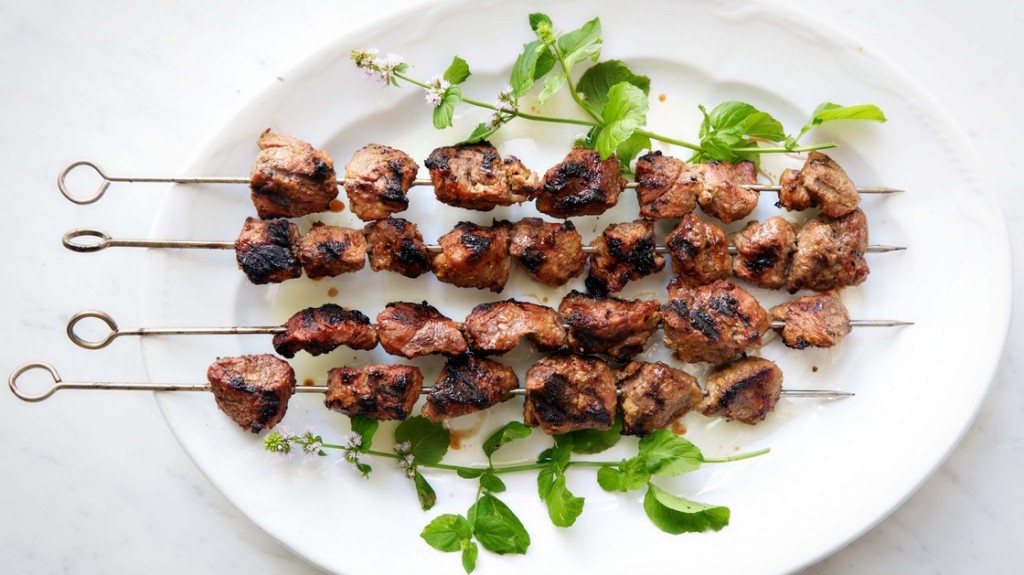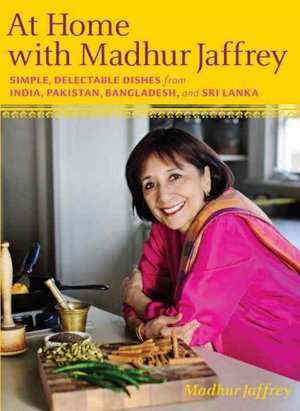
Listen to the Story on All Things Considered

Listen to the Story on All Things Considered
Post by NPR Staff, The Salt at NPR (7/2/13)
In America, summer grilling generally means heading to the backyard and throwing some hot dogs, burgers and maybe vegetable skewers on the fire. But in India and Pakistan, where summers last for seven months, grilling takes on a whole new level of sophistication.
For starters, forget the gas versus charcoal grill debate. Many cooks in the Indian subcontinent grill using tandoor ovens that they adopted from the Middle East, says chef and writer Madhur Jaffrey, an authority on flavors and techniques from the region.
Originally, all tandoors were clay and kept outdoors. When heated, they can reach 750 to 900 degrees.
 "You have to get used to putting your hand in that," Jaffrey tells Robert Siegel on All Things Considered. "It's a whole technique, which ... generations of people, one after the other, learned how to do."
"You have to get used to putting your hand in that," Jaffrey tells Robert Siegel on All Things Considered. "It's a whole technique, which ... generations of people, one after the other, learned how to do."
Interestingly, tandoors are relative newcomers to Indian cooking, she says, only entering the mainstream after 1947, when India was partitioned and Pakistan was formed. Hindu refugees who fled from Pakistan brought little tandoors with them.
"Before that, the country of India as a whole had not heard of tandoors," she says. "But now they are everywhere."
Jaffrey says cooking at such a high heat does something magical to food, especially meat like chicken. "The juices are sealed and the spices go right into the chicken, and then it cooks quite fast, and it's very tender," she says.
Unfortunately, it's not that easy to set up a tandoor oven in your own American backyard. Even the cheap ones need regular maintenance, including rubbing on new clay. But you can still adapt the same recipes for gas or charcoal grills.
One of Jaffrey's favorite recipes is a Chappali Kebab. "It's like a hamburger," she says, stuffed with crushed coriander and cumin, tomatoes, green chilies and onions.
"They're absolutely scrumptious and delicious," she says.
And don't forget grilled potatoes on the side. Jaffrey boils a few, before coating them in a mixture of ground coriander, chili powder, turmeric and cumin.
"They brown on the grill with all these spices around them. But they're already boiled, so the spices don't burn," she says. "It's just gorgeous."
This post is part of Global Grill, a summer series from All Things Considered that pulls apart the smoky flavors of grilled foods from around the world.
Editor's Note: Jaffrey shared this recipe, adapted for use without a tandoor oven.
Chappali kebabs, popular throughout much of Pakistan but originating near its borders with Afghanistan, are beef patties shallow-fried in the fat rendered from the tail of a sheep. If you can imagine a juicy, spicy hamburger cooked in roast beef drippings, you get a general idea: delicious but iffy on the health front. So over the years, I have come up with my own version, a turkey kebab. You can fry them in a pan with oil or cook on the grill like you would with hamburgers.
Makes 6 patties
Ingredients:
2 tablespoons plain yogurt
1 pound ground turkey (preferably a mixture of light and dark meat)
3/4 teaspoon salt, or to taste
1 tablespoon whole coriander seeds and 1 teaspoon whole cumin seeds, crushed lightly in a mortar or put between sheets of foil and crushed with a rolling pin
1/4 cup finely chopped fresh mint
1/2 teaspoon crushed red pepper flakes
1 teaspoon finely grated peeled fresh ginger
5 tablespoons olive or canola oil
Instructions:
Spoon the yogurt into a small sieve and set it over a cup to drain. Ten minutes will do it, but longer will not hurt.
Put the drained yogurt and all the ingredients except the oil in a bowl and mix well. Cover and refrigerate at least 1 hour or as long as 24 hours so flavors meld.
Divide the meat into six portions and form balls. Flatten the balls to make 3 1/2-inch clean-edged patties.
Pour the oil into a large frying pan and set over medium-high heat. When hot, put in as many patties as well fit in easily and fry about 1 minute or less on each side or until browned. Turn the heat down to medium low and continue to cook the patties, turning frequently, until the juices run clear when the patties are pressed. Make all the patties this way and serve hot.
Recipe from At Home with Madhur Jaffrey. Copyright 2010 by Madhur Jaffrey. Published by Knopf. Reprinted by permission
Copyright 2013 NPR.